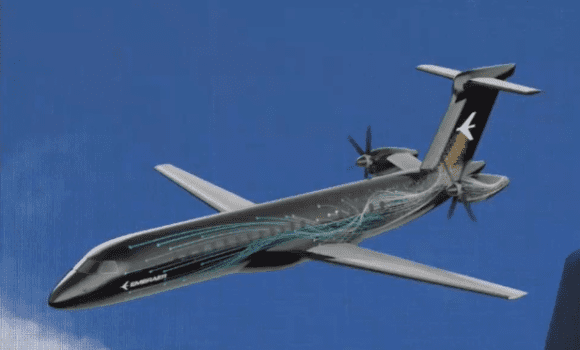Rolls-Royce has withdrawn its participation to Boeing’s New Mid-market Aircraft (NMA), citing conflicting time schedules as the major reason for its decision. Rolls- Royce announced its decision on February 28 during the presentation of its 2018 results but had informed Boeing about it already late last year.
Rolls-Royce had offered its new UltraFan high-bypass engine concept as the powerplant for the NMA, which Boeing plans to have ready by 2025/2026. Although UltraFan has made some major steps ahead in recent months (including a test of the complete low-pressure fan and fan case system), this schedule is too tight to Rolls’ liking.
“Based on the extensive work and specifications, we couldn’t find enough overlap between our schedule and Boeing‘s”, said CEO Warren East. “Technically we could make it work, but we know we need rigorous testing. We simply couldn’t find enough hours in the day to do all the work to fit the schedule, so we were open on this to Boeing. Once we ascertained that we couldn’t meet the schedule, we decided to withdraw”. Rolls-Royce didn’t want to risk delaying Boeing’s program nor reliability of the UltraFan. “Meeting Boeing’s timetable would have required accelerating our demonstrator program and withdrawing from the process will enable us to have a high confidence in engine maturity towards the end of the next decade”.
The decision leaves Boeing with one potential supplier less and Rolls-Royce without a potential airframe for the UltraFan. East expects a first opportunity to arise on a future wide-body program from either Airbus or Boeing, without specifying which one that can be. He disagreed with the perception that Rolls-Royce now seems to be connected exclusively to Airbus, while Boeing is tying-up more with General Electric (via the 777X, on the 787 and on the MAX through GE/Safran’s LEAP). East doesn’t rule out becoming a partner in a possible NMA powerplant option but wants to see how this pans out.
Rolls-Royce announced a Group underlying operating profit for 2018 of GBP 616mln, up from 306mln. Group loss increased to GBP 1.161bln, down from a profit of 366mln in 2017, reflecting exceptional items. Group revenues increase 8% to GBP 15.067bln.
Civil Aerospace delivered 480 large engines and reduced losses by 13% per engine to GBP 1.4mln. Most attention went to the Trent 1000 intermediate pressure compressor blade issues. Despite making good progress on a technical solution for the Package C blades and getting certification of the updated spec, Rolls-Royce made another GBP 236mln exceptional charge on the program from 554mln to 790mln. Total cash costs were 100mln higher than earlier estimates, with total cash impact last year of GBP 431mln. For 2019, the impact of another GBP 450mln is calculated before declining from 2020 by at least 100mln. These costs include compensation to airlines, whose operations with their Trent 100-powered Boeing 787s have been seriously affected by shop visits. According to Rolls, there are 35 787s grounded right now.
Blade issues on the Trent 900 on the Airbus A380 cost Rolls another GBP 14mln last year, but the OEM recorded an exceptional item of GBP 186mln in the 2018 results to cover onerous contracts, tooling write-off, and faster depreciation, now that Airbus announced it will end A380 production in 2021.
Rolls-Royce spent GBP 1.378bln on Research and Development last year, most on UltraFan and the new Pearl business aviation engine program.
For 2019 the company expects a 10% growth in revenues in its civil aerospace division, with a Group operating profit of GBP 700 mln plus/minus 100mln.
The Rolls-Royce UltraFan recently completed a first test with its advanced low-pressure fan and fan case system. (Rolls-Royce)
Views: 4




